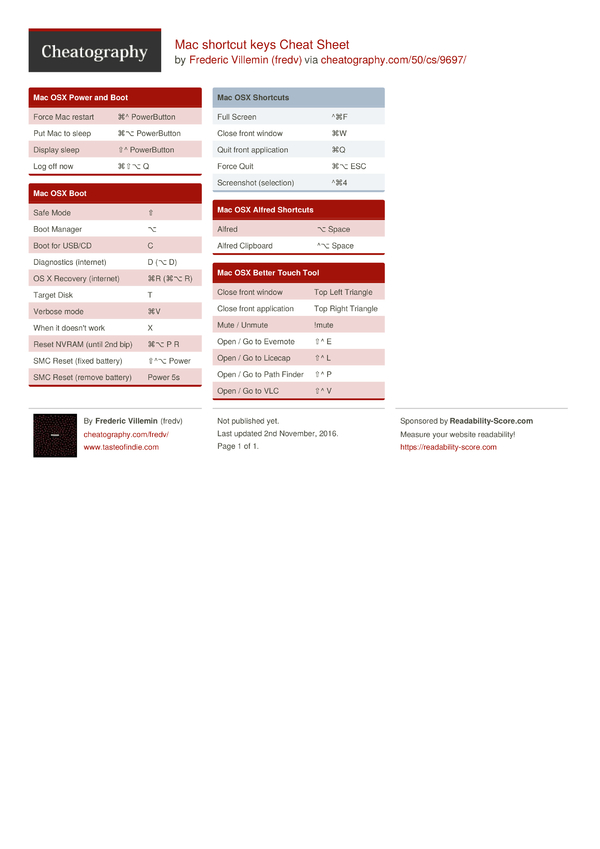
- #Mac command key through tight vnc how to#
- #Mac command key through tight vnc mac os x#
- #Mac command key through tight vnc install#
- #Mac command key through tight vnc full#
This should also prohibit most windows hotkeys like Win+R since your program doesn’t map it and explorer isn’t running to catch it, I think mostly the Ctrl+Alt+Del would work, but not too many others (Win+L would probably still work or is it Win+K, whatever it is to lock the screen). Also if someone else finds a way to launch explorer.exe it would only function as a file manager, it shouldn’t bring a desktop up.
#Mac command key through tight vnc mac os x#
I suspect your program would have to be in the same folder as explorer.exe. When pressing the windows keyboard alt key, Mac OS X identifies it as the command key ( also represented by the symbol) instead of identifing it as the Mac alt key ( also called option key, represented by the symbol ). You could also potentially replace the explorer shell with your application by editing the registry at HKEY_LOCAL_MACHINE\Software\Microsoft\Windows NT\CurrentVersion\Winlogon\ShellĪnd setting explorer.exe to your AutoIt Program name. Which according to this website is the command logoff You could probably put something together within AutoIT to launch the exact path for the remote desktop software and then create an event within your au3 script that checks for mstsc.exe to see if it is running and in the event that it isn’t it could trigger a logout.
#Mac command key through tight vnc how to#
How to enable Remote desktop from command lineĬlever Idea, You could effectively make a machine run like a terminal. By specifying this complete path we can launch connection manager. It is usually installed in the path C:\Program Files\Remote Desktop Connection Manager\RDCman.exe. There is no Run command for opening remote desktop connection manager directly. These commands work on XP, Vista, Windows 7 and Server 2003/2008 operating systems. mstsc /v:computername Run command to specify remote desktop connection settings using a rdp file mstsc RDP_filenameĪ RDP file can be created using the ‘ Save As‘ button in the General tab in mstsc(Remote desktop connection client) window. mstsc /f Run command for specifying the remote computer name from the command itself
#Mac command key through tight vnc full#
Run command for opening remote desktop session in full screen modeĪdd /f switch to the command.

This command can be run from command prompt or from Run window. To do this we need to add /console switch to the mstsc command. This allows us to login back to the same user session if we already have one. To avoid this we can open a connection to the console. Mstsc commandĮvery time we connect to the server it opens a new user session. A computer running Windows server edition can support remote sessions for multiple users at the same time. Sudo defaults write /Library/Preferences/ system running Windows 7/Windows 10 allows only one remote desktop connection at a time, means only one remote user can work on it any time. You can also configure screen sharing by running the following command on the MAC computer: Please add a password, as explained above. If during the remote control, the message “Server did not offer supported security type!” appears. Remember to add this password in the Mac VNC configuration of our software. The way to do that is to click on “ Computer Settings” then enable “ VNC viewers may control screen with password”. On the screen sharing page, you can change the access authorizations and add a password for the remote control. You just activate the VNC server, allowing you to connect to this computer with our software. Enable “ Screen Sharing” within the services panel. In the Options, Click the check box next to “ Share files and folders using SMB (Windows)”.

Enable “ File Sharing” within the services panel. Samba allows your computer to be visible on your domain. If you use your domain controller as a DNS server, add your server in the DNS tab.

Change the workgroup with the domain where this Mac is going to appear. Select your default connection, click on “ Advanced”. Go in the “ System Preferences”, section “ Network”.
#Mac command key through tight vnc install#
I want to install the VNC server module across the whole of my Mac OS X client machines. How to configure the TightVNC remote control tool (screen sharing)? How do I install VNC server on Mac OS X client computers?


 0 kommentar(er)
0 kommentar(er)
